What are Key Design Considerations for Explosion-Proof Lighting Systems
Designing effective explosion-proof lighting systems requires careful consideration of various factors, from the classification of hazardous areas to the selection of appropriate fixtures and installation practices. In this article, we explore the essential design considerations for explosion-proof lighting, highlighting the key principles and practices that underpin safety in hazardous environments.
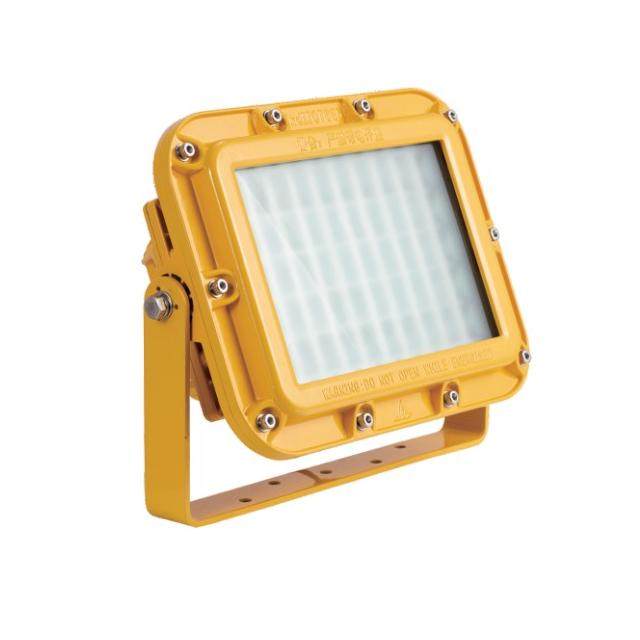
Understanding Hazardous Area Classification for Designing Explosion-proof Lighting
1. Classifications
- Hazardous areas are categorized based on the types and concentrations of flammable substances present, as well as the likelihood of their ignition.
- Common classifications include Class I (gas), Class II (dust), and Class III (fibers and flyings), with subdivisions denoting the nature and extent of the hazard.
2. Zone Classification
- Hazardous zones further delineate the level of risk within a hazardous area, ranging from Zone 0 (high risk) to Zone 2 (low risk) for gases, and Zone 20 (high risk) to Zone 22 (low risk) for dust.
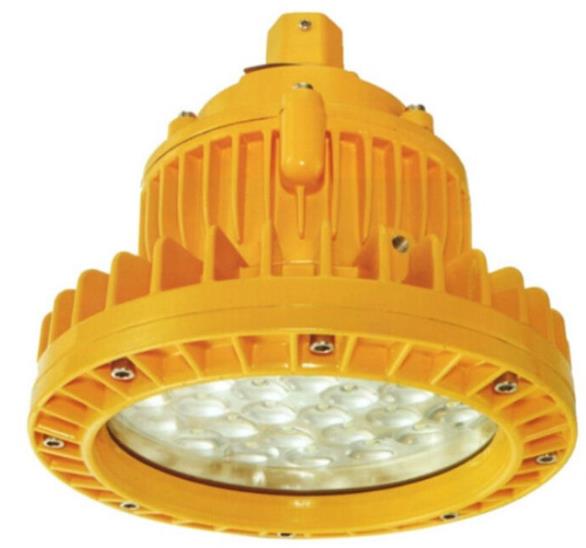
Fixture Selection and Certification in Explosion-Proof Lighting
1. Explosion-Proof Fixture Design
- Explosion-proof lighting fixtures are specifically designed to prevent ignition of flammable gases, vapors, or dust particles present in hazardous environments.
- These fixtures feature robust construction and sealed enclosures that can withstand internal pressures generated by an explosion without allowing ignition to propagate outside the enclosure.
2. Materials and Construction
- Explosion-proof fixtures are typically constructed from durable materials such as cast aluminum, stainless steel, or fiberglass-reinforced plastic.
- The choice of materials depends on factors such as the corrosiveness of the environment, ambient temperature, and mechanical stresses.
3. Enclosure Ratings and Certifications
- Lighting fixtures used in hazardous locations must meet specific certification standards to ensure their safety and compliance with regulations.
- Common certifications include: ATEX (European Union): Certifies compliance with European directives for equipment intended for use in potentially explosive atmospheres. UL (Underwriters Laboratories): Ensures compliance with safety standards established by UL for explosion-proof equipment in the United States. IECEx (International Electrotechnical Commission Explosive Atmospheres): Provides international certification for electrical equipment used in explosive atmospheres.
- Each certification signifies that the fixture has undergone rigorous testing and evaluation to ensure it meets the required safety standards.
4. Choosing the Right Fixture Type
The selection of fixture type depends on the specific requirements of the hazardous area, including the presence of gases, vapors, or dust.
Common types of explosion-proof lighting fixtures include
- Enclosed fixtures: Fully sealed luminaires designed to contain any potential explosion within the enclosure.
- Explosion-proof floodlights: Provides wide-area illumination for outdoor spaces in hazardous environments.
- LED explosion-proof fixtures: Energy-efficient lighting solutions that offer long service life and reduced maintenance requirements.
- Emergency lighting fixtures: Designed to provide illumination during power outages or emergencies, ensuring safe evacuation of personnel.
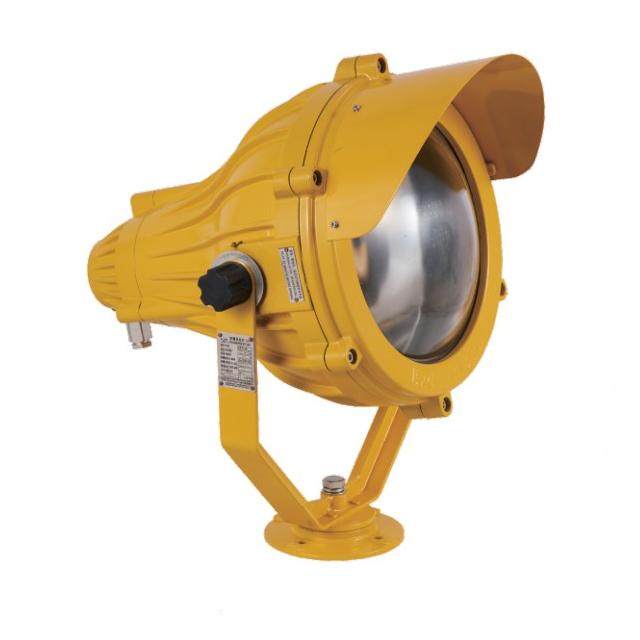
Optimal Lighting Design in Explosion-Proof Lighting
1. Task Requirements and Illumination Levels
- Begin by assessing the specific tasks performed in the hazardous area and determining the required illumination levels.
- Different tasks may have varying illumination requirements, so it’s essential to tailor the lighting design accordingly.
- Illumination levels should be sufficient to ensure safe working conditions and visibility while avoiding over-illumination, which can contribute to glare and discomfort.
2. Uniformity of Illumination
- Aim for uniform distribution of light throughout the hazardous area to minimize shadows and contrast, which can impede visibility and increase the risk of accidents.
- Uniform illumination helps ensure consistent visibility across the workspace, reducing the likelihood of overlooked hazards or obstacles.
3. Fixture Placement and Spacing
- Carefully plan the placement and spacing of lighting fixtures to achieve optimal coverage and uniformity of illumination.
- Consider factors such as the layout of the workspace, the height of the fixtures, and potential obstructions that may affect light distribution.
- Ensure that fixtures are positioned to provide adequate coverage while avoiding excessive overlap, which can lead to wasted energy and uneven lighting.
4. Lighting Control and Flexibility
- Incorporate lighting control mechanisms to adjust illumination levels based on changing environmental conditions or task requirements.
- Dimming controls or multi-level lighting systems allow for flexibility in adjusting light output to meet specific needs while conserving energy.
- Implement emergency lighting systems that activate automatically in the event of a power outage or emergency, ensuring continued illumination for safe evacuation.
5. Glare Control
- Minimize glare by using fixtures with appropriate shielding or diffusers to direct light downward and reduce direct glare.
- Glare can cause visual discomfort and impair visibility, particularly in environments with reflective surfaces or bright background lighting.
- Opt for fixtures with glare-reducing features or accessories to enhance visual comfort and maintain safety in the workspace.
6. Color Rendering and Temperature
- Consider the color rendering index (CRI) and color temperature of lighting fixtures to ensure accurate color perception and visual clarity.
- High CRI fixtures provide better color rendition, which is essential for tasks that require accurate color discrimination.
- Choose color temperatures that align with the specific requirements of the workspace, balancing factors such as visual comfort, task performance, and ambiance.
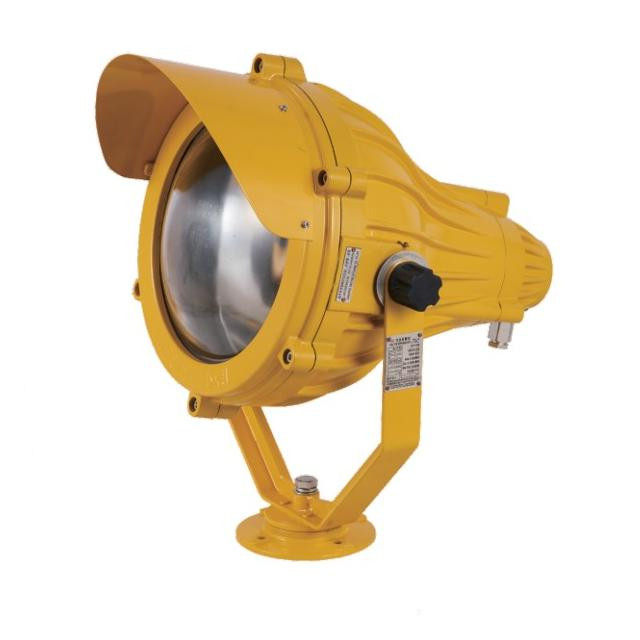
Maintenance and Inspection in Explosion-Proof Lighting
Maintenance and inspection are critical aspects of ensuring the continued safety and reliability of explosion-proof lighting systems in hazardous environments.
1. Scheduled Maintenance Routine
- Establish a scheduled maintenance routine for explosion-proof lighting systems, specifying intervals for inspection, testing, and servicing.
- Consider factors such as the operating environment, manufacturer recommendations, and regulatory requirements when determining maintenance schedules.
2. Visual Inspection
- Conduct regular visual inspections of lighting fixtures to identify any signs of damage, corrosion, or deterioration.
- Inspect the fixture enclosures, lenses, seals, and mounting hardware for cracks, leaks, or other defects that could compromise integrity.
- Check for the presence of dust, dirt, or debris that may obstruct ventilation or accumulate on lamp surfaces.
3. Electrical Inspection
- Inspect electrical connections, wiring, and terminals for signs of overheating, corrosion, or loose connections.
- Verify that all electrical components are securely fastened and properly grounded to prevent the risk of electrical faults or arcing.
- Use appropriate testing equipment, such as multimeters or insulation testers, to ensure the integrity of electrical insulation and continuity of circuits.
4. Lamp Replacement
- Replace lamps or light sources as recommended by the manufacturer or based on predetermined lamp life expectancy.
- Follow proper procedures for lamp replacement, including de-energizing the circuit, allowing sufficient cooling time, and using appropriate personal protective equipment (PPE).
- Dispose of spent lamps in accordance with local regulations and environmental guidelines, particularly for lamps containing hazardous materials such as mercury.
5. Seal Integrity
- Check the integrity of seals and gaskets on explosion-proof lighting fixtures to ensure they remain watertight and dustproof.
- Inspect seals for signs of wear, degradation, or compression loss that could compromise enclosure integrity and ingress protection.
- Replace damaged or deteriorated seals promptly to maintain the integrity of the fixture enclosure and prevent moisture or contaminants from entering.
6. Cleaning and Maintenance Procedures
- Develop cleaning and maintenance procedures for explosion-proof lighting fixtures to remove dirt, grease, or other contaminants that may accumulate over time.
- Use appropriate cleaning agents and methods that are compatible with the fixture materials and will not compromise integrity or performance.
- Regular cleaning helps maintain optical clarity, prevent corrosion, and prolong the service life of lighting fixtures in hazardous environments.
7. Documentation and Record-Keeping
- Maintain detailed records of maintenance activities, including inspection dates, findings, corrective actions taken, and any replacement parts or materials used.
- Document compliance with regulatory requirements, manufacturer recommendations, and industry standards to demonstrate due diligence and ensure accountability.
- Keep records organized and accessible for reference during audits, inspections, or emergency situations.
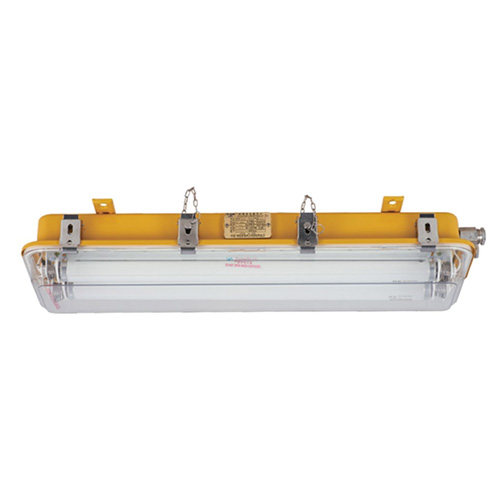
Conclusion
Explosion-proof lighting serves as a beacon of safety in hazardous environments, illuminating pathways and work areas while safeguarding against the threat of ignition and explosion. Designing explosion-proof lighting systems requires a comprehensive understanding of hazardous area classifications, fixture selection, optimal lighting design, and maintenance practices.


